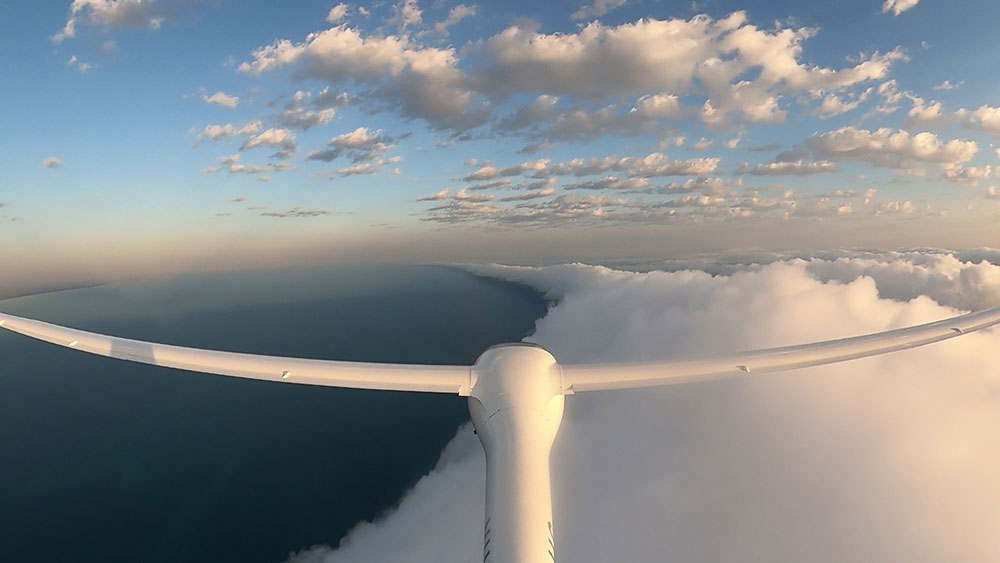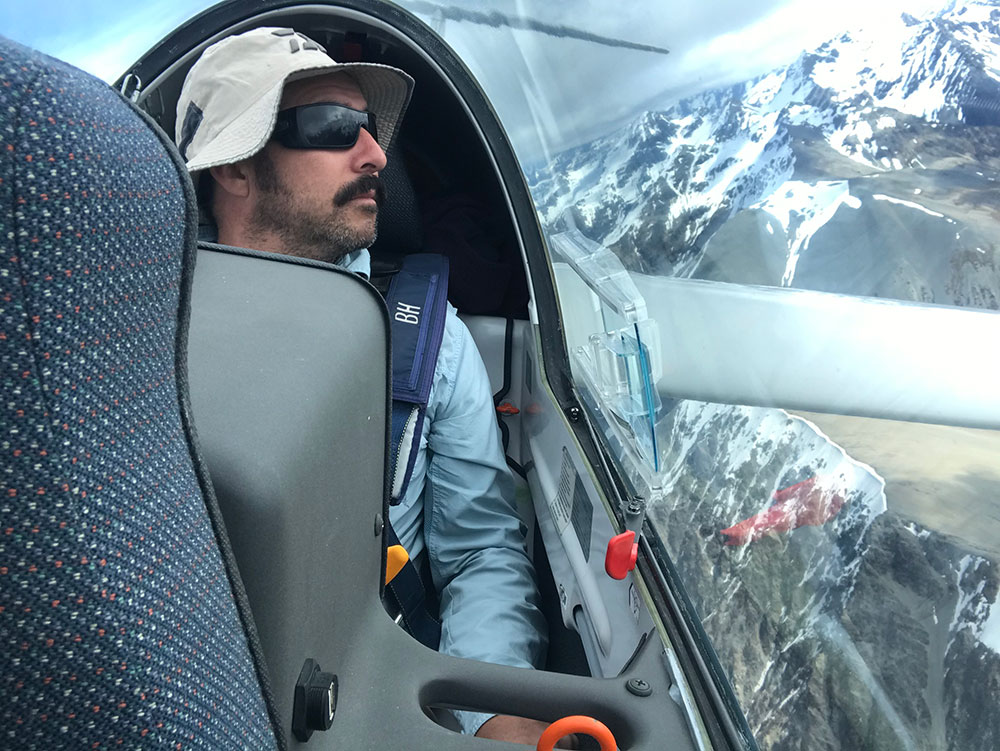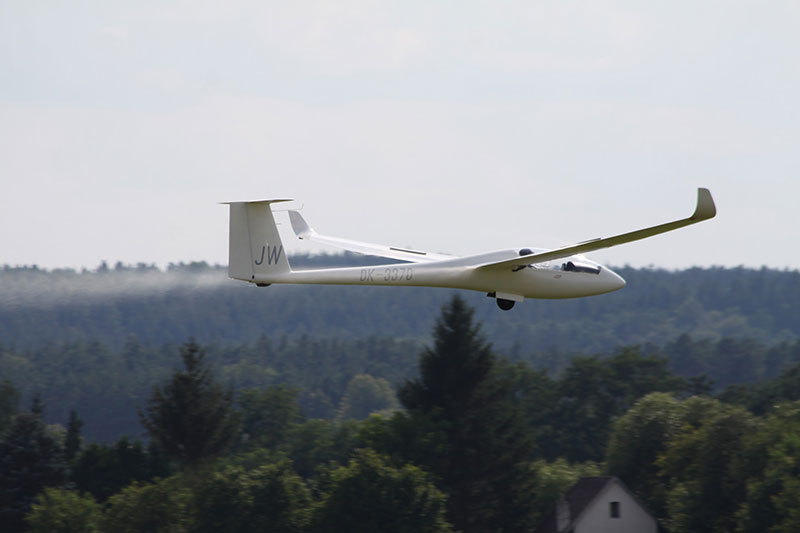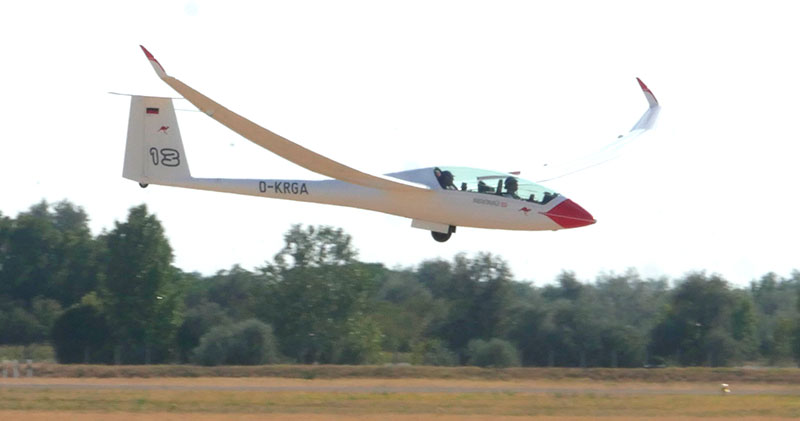I wonder how many times you have seen a pilot, competent or even highly competent,
make a stupid mistake. Over many years of flying, I have seen accidents and incidents
that fall into this category.

By James Cooper
Then of course, relatively inexperienced pilots can make what appear to be silly mistakes, despite their training. Why is this, after all the training and experience?
After about 4,000 hours of solo flying, I believe I have found one of the answers and solutions.
I am not a psychologist by any means, but stress is a subject that should come up regularly in conversations. I feel, however, that subjects revolving around stress are not brought up enough and the solution never mentioned. I will discuss my thoughts and what I have learnt over the years.
What causes stress and how does it affect decision making?
A stressed-out glider pilot will not be able to concentrate on the job in hand, and therefore their performance will drop. I believe three-times World Gliding Champion Helmut Reichmann said. “A glider pilot needs to make a conscious decision every 30 seconds.” If the pilot is stressed, they will not be good gliding decisions. What helps to bring on stress or reduce it?
Each person responds to stress differently. Some will be stressed easily and others less. For some pilots, the effects of stress will be great, and for others little. The effects of excessive stress result in loss of feel of the glider, inability to be intuitive, loss of concentration and the ability to take in the broader picture – all leading to poor decision-making. Most stress-related accidents happen when the pilot ends up focusing on just one thing and not taking in all of their options.
The graph indicates the effects of stress on the performance on two people. With very low stress, in the semi sleeping state, the performance is low in both cases. Now, as stress increases, there is actually an increase in the performance of both, although A needs less stress to increase their performance, whereas B needs a bit more stimulation to perform well. However, A does not reach as high a performance as person B but in turn maintains a higher performance under high stress than Person B whose performance drops abruptly under high stress.
These two graphs give you an idea that different people react to stress in quite different ways but in principle, as stress increases, performance will improve then deteriorate. Practice and visualisation will help the curve. How do you perform in response to stress?
We can also look at the graph and apply some scenarios. If you are fully relaxed as you step into the glider, you could be sitting at the far left of the graph. Your performance may be low and if something goes wrong during the launch you may not be able to perform well. So, make sure you do your checks, Visualise all the things that could go wrong and how you are going to respond.
Lifestyle Stress
There are in fact two types of stress. Some are driven by your lifestyle and affect your state of mind and concentration, even before you step into the glider. I will look at these first. In effect this type of stress will make your mind wander. Recalling Reichman’s comment, instead of making a gliding decision on a regular basis, you will be thinking about the stress you left behind or will be receiving when you land. Activities affecting stress levels are listed below.
Good for Stress
Exercise
Sex
Laughter
Gliding
Socialising
Practice
Visualisation
Checklists
Bad for Stress
Club Bitching
Work Problems / Finance
Poor Health
Landing Out
Unusual Aircraft
Smoking and Stimulants
Stress at Home
Getting Low
These lists could go on forever, but you get the idea. If your life is stressed generally, your mind is unable to concentrate on the subject in hand. Your whole flying tactics will be poor and important things like lookout will deteriorate. While I cannot, in this article, give advice on many of the items in either list – there are plenty of books that can help – I can say that the more you fly and the more you have landed out, the less stress you will experience.
I will also touch on the last two items in each of the lists above.
Visualisation
Visualisation is the practise of picturing a scenario in your mind. For example, I was talking with a friend who did not like getting low. He was highly experienced but once he was lower than 3,000ft, he began to stress. “I don’t like it here.” So I suggested that he picture himself flying down to 2,000ft, having headed for a good thermal source, feeling the pre-thermal cobble stones, the surge, turning the glider into the climb and soaring away.
I also suggested that he picture the many times he had soared away from the back of the tug. In other workds, if you can keep in your mind that you can climb away from a low, but safe altitude, then you won’t get stressed and you’ll fly well. Visualisation allows you to place yourself in a situation, in your mind, where you have not been to physically before. Visualising jumping out of your glider may therefore be useful one day. Let’s hope you’ll never have to go there, but if you have visualised it, that experience could save your life.
Checklists and More
Checklists are a simple way to prevent stress. If you have not used a check list when flying, things may well start going wrong. Is your oxygen switched on? have you brought your maps, hat and sunscreen? For motor glider pilots, is the fuel on? You can avoid missing out on hundreds of things by using a check list. There is no excuse for launching with being fully checked out, but if you choose not to use check lists, expect to be put into stress one day. Furthermore, with the latest LX you can put in as many check lists as you want.
Getting low is perhaps the most common cause of stress. The solution is simple. How many times have you landed back at the club with a 2,000ft tow? Hardly ever. Now, remember that when flying cross-country, you have a greater search area than at the club, as you are not tied to the airfield. So why the worry? You’ve done it before you can do it again. If you’re in trouble, so are the rest. If you got away, maybe they did not. Don’t stress. Each of the items of stress can generally be dismissed as either irrational or irrelevant. Concentrate on what is relevant. Relax and feel the glider. It’s meant to be fun.
Stress at home can occur when, after a good day flying, the last thing you want to do is go home to your family who have been slaving in the heat of a hot WA day, while you have been having a great time. Look after them now, take them out, buy flowers and do what you should. It will make it much less stressful next time you want to go to the club. A stressful relationship is a lot more stressful than stressful flying.
Relaxation Routine
As glider pilots over a long competition week, particularly comps directors, the build up of stress can be considerable. Stress is cumulative. How do we get rid of stress over these long periods? A relaxation routine can be very good.
Lie on the ground, on a towel bed or what takes your fancy. Don’t get stressed out by what people think of you! Relax your body starting at your feet and working your way up your body, firstly by stressing the muscles in say your feet then relaxing them. Do this a few times before moving up each muscle in the leg. Follow that with the fingers, then arms, in sequence, stressing then relaxing each part of the body.
After about ten minutes you will feel quite relaxed. Think about things that would make you feel happy. Imagine flying the glider into a strong thermal, pulling up, getting the core first go, nice tight turn, nose up, yaw string in the right place, a little top rudder, beautiful. When John Buchanan did this at a training camp I was attending, one of the pilots was snoring within 10 minutes!
Relax in the cockpit by doing stretching exercises. Rotate the shoulders, move the back. It makes you feel much better.
I have found another great stress reliever. One year, I had a goal to win the state championships. However, on one day when all the others got round, I landed out and my goal was blown. I was not a happy chappy. Off I went into the caravan to sulk, out came Calvin and Hobbs – problem solved.
On the Way to an Accident
The stress we have talked about up to now I will call background stress The second type of stress is the type that builds up due, generally, to unexpected and unusual situations. Near misses, landing out certainly for early hour pilots, flying over unfamiliar terrain and equipment failure are some examples. There is the more common cause, pushing yourself beyond your ability, as well, like getting low on final glide, not understanding your instruments and painting yourself into a corner.
How do you recognise these triggers and prevent them from turning into an accident? This type of stress does not just make you less competitive, but can also become fatal. It can be cumulative and last well after the initial stress began. This type of stress will put you into the ‘fight or flight’ mode – and not the soaring type of flight.
In principle, fight or flight is a survival instinct in which the body puts more blood into the muscles so that you can either fight or run from a predator. The problem is that it takes the blood from the brain and makes you stupid. Our brain will go into neutral and generally not consider any other options than the one that it is fixated on. ‘Get-there-itis’ is the normal scenario. My personal example follows below.
Big Wing Landing
I had been used to flying a 15m SZD 55, but had recently purchased a new ASH 31 Motor Glider. A 21 meter glider with flaps is quite a different animal to the lively go cart I had been accustomed to. Despite all the landings that I had made, I was still not 100% confident with my landing with big wings and powerful landing flaps. That was stress factor 1.
On my second cross country flight on a not particularly good soaring day, I was about 150km from home. I had flown many days like these. I got a bit low, selected a paddock but then decided to fire up the engine. It failed to start, due to a sensor issue. That made stress factor 2 – remember, stress is cumulative.
So I did the right thing by going into gliding mode and forgot about the engine. I climbed away and set off to the nearest gliding airfield with the aim of landing there if things did not improve. As hoped, the conditions improved a little and I then turned for home. Shortly after the computer screen went blank and as the area I was in had few clear marks to indicate the distance from the home airfield, I was not sure of my final glide in the new glider – which was stress factor 3.
At last I was clearly on final glide for the airfield but with a straight in approach. No problem. I had done that many times before. I even recall saying to myself, “OK, a stressful day, concentrate and get this landing right.” I went through my prelanding checks and clearly remember looking at the undercarriage leaver, which had been cycled a few times in the flight. As I rounded out, the glider got lower and, with a horrible scraping sound, ground to a halt. I had reached my stress limit and not been able to get out of it. I had become stupid.
Releaving Stress

So after my incident I was keen to find out how to resolve this problem. I knew I was under stress – but how do I stop the body going into fight or flight? It was not until I read G Dale’s books, ‘The Soaring Engine’, that I discovered what to do. Those books are a must for glider pilots.
G Dale’s method to relieve stress is known as Box Breathing, commonly used by people who naturally become stressed. In cycles of 4 seconds, Breath in / Hold your breath / Breath out / Hold your breath. Repeat a number of times. It works!
Practice the technique regularly so that if you become stressed, it comes as instinct. I have done some flying over the north of WA where there are very large expanses of unlandable terrain. I don’t need to be stressed. Box breathing does help.































